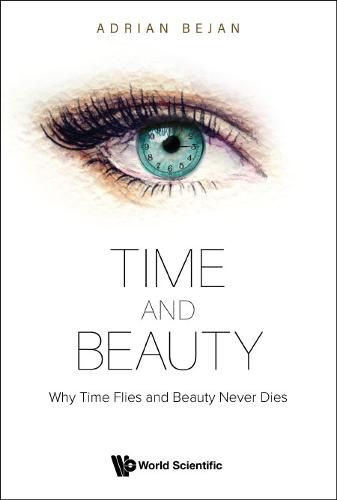Readings Newsletter
Become a Readings Member to make your shopping experience even easier.
Sign in or sign up for free!
You’re not far away from qualifying for FREE standard shipping within Australia
You’ve qualified for FREE standard shipping within Australia
The cart is loading…






This title is printed to order. This book may have been self-published. If so, we cannot guarantee the quality of the content. In the main most books will have gone through the editing process however some may not. We therefore suggest that you be aware of this before ordering this book. If in doubt check either the author or publisher’s details as we are unable to accept any returns unless they are faulty. Please contact us if you have any questions.
Time and beauty are two of our most visceral perceptions. Yet, their nature is seldom questioned. In this ground-breaking new work, Adrian Bejan - a true ‘original’ among physicists - explains, in a scholarly yet colorful style, the scientific basis for the perception of time and beauty.Organized into three main ideas, the book begins first with the perception of time. The author expounds on why we feel that time flies faster as we get older. Perceived time, also called ‘mind time,’ is different from clock time. In this context, time is another word for ‘perceived change’. Next, readers will discover that beauty is appealing because beautifully-shaped images are scanned faster by two eyes. To observe our immediate surroundings and to understand them faster is highly advantageous to survival; hence, there is an underlying evolutionary advantage to our discernment for ideal ratios, shapes, and beauty at large. Finally, time and beauty are jointly understood to explain why the global pandemic had decelerated our mind time. This understanding arms us with techniques to slow down our mind time (which accelerates with age), and to create the conditions for living longer and more creatively.Scientists may have contemplated aspects of time and beauty separately. In contrast, the author submits an original and rewarding approach to understanding them together. In the process, key questions to our cognition are answered. Why does the mind ‘try’ to make sense of a new mental image? Why is there a natural tendency to organize a new input and mentally position it among past perceptions? Through physics, the book offers a general answer: to empower the individual with speed and clarity of thought, understanding, decision-making and movement. The same answer holds for the other disparate perceptions illustrated in this book, from time and beauty to ideas, message, shape, perspective, art, science, illusions, and dreams.
$9.00 standard shipping within Australia
FREE standard shipping within Australia for orders over $100.00
Express & International shipping calculated at checkout
This title is printed to order. This book may have been self-published. If so, we cannot guarantee the quality of the content. In the main most books will have gone through the editing process however some may not. We therefore suggest that you be aware of this before ordering this book. If in doubt check either the author or publisher’s details as we are unable to accept any returns unless they are faulty. Please contact us if you have any questions.
Time and beauty are two of our most visceral perceptions. Yet, their nature is seldom questioned. In this ground-breaking new work, Adrian Bejan - a true ‘original’ among physicists - explains, in a scholarly yet colorful style, the scientific basis for the perception of time and beauty.Organized into three main ideas, the book begins first with the perception of time. The author expounds on why we feel that time flies faster as we get older. Perceived time, also called ‘mind time,’ is different from clock time. In this context, time is another word for ‘perceived change’. Next, readers will discover that beauty is appealing because beautifully-shaped images are scanned faster by two eyes. To observe our immediate surroundings and to understand them faster is highly advantageous to survival; hence, there is an underlying evolutionary advantage to our discernment for ideal ratios, shapes, and beauty at large. Finally, time and beauty are jointly understood to explain why the global pandemic had decelerated our mind time. This understanding arms us with techniques to slow down our mind time (which accelerates with age), and to create the conditions for living longer and more creatively.Scientists may have contemplated aspects of time and beauty separately. In contrast, the author submits an original and rewarding approach to understanding them together. In the process, key questions to our cognition are answered. Why does the mind ‘try’ to make sense of a new mental image? Why is there a natural tendency to organize a new input and mentally position it among past perceptions? Through physics, the book offers a general answer: to empower the individual with speed and clarity of thought, understanding, decision-making and movement. The same answer holds for the other disparate perceptions illustrated in this book, from time and beauty to ideas, message, shape, perspective, art, science, illusions, and dreams.